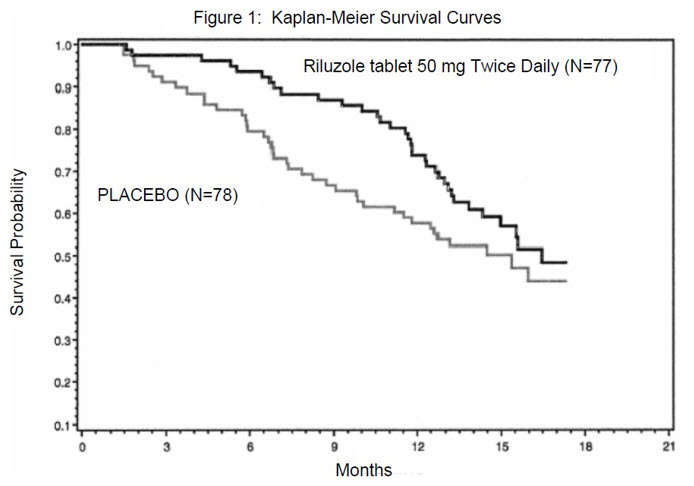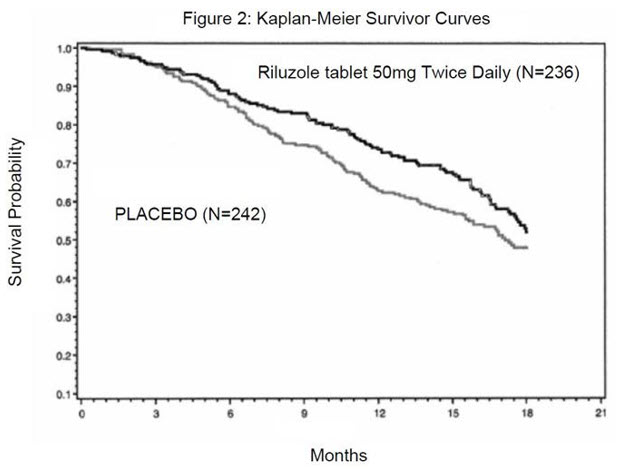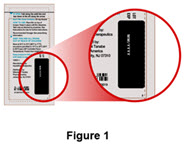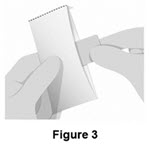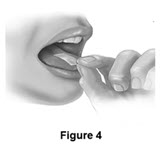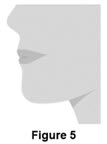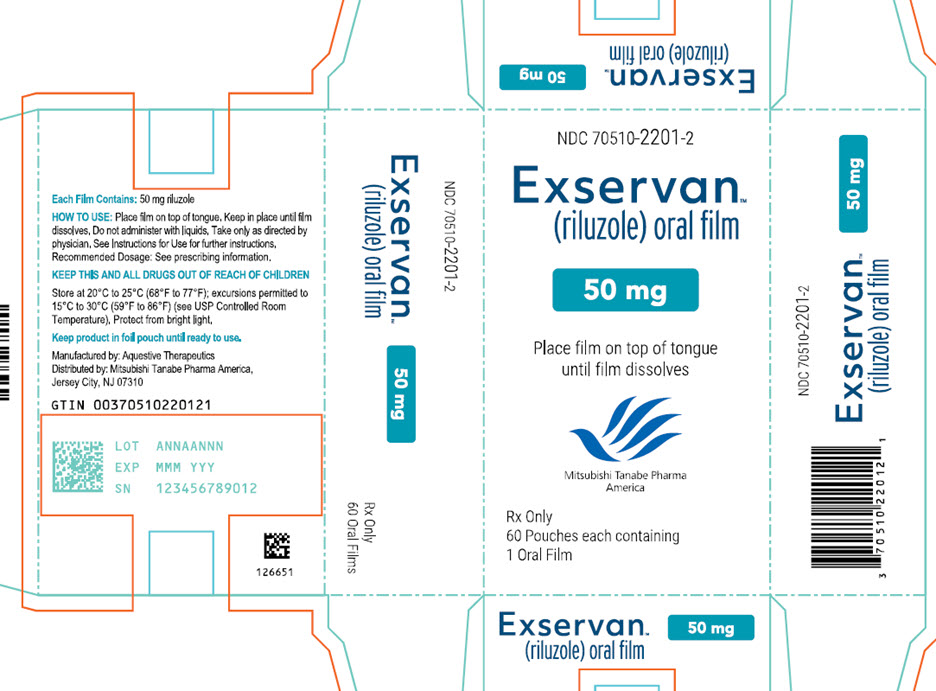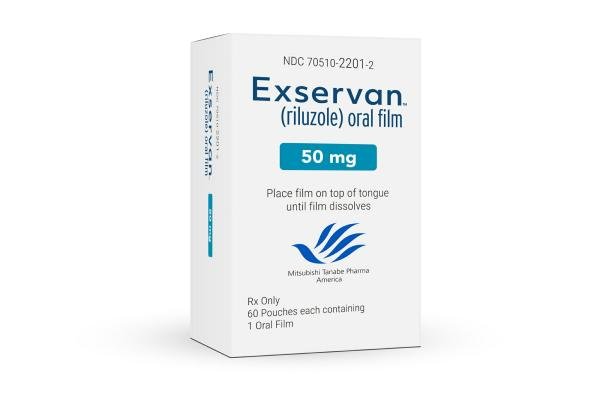Exservan: Package Insert / Prescribing Info
Package insert / product label
Generic name: riluzole
Dosage form: oral film
Drug class: Miscellaneous central nervous system agents
Medically reviewed by Drugs.com. Last updated on Aug 5, 2024.
On This Page
- Indications and Usage
- Dosage and Administration
- Dosage Forms and Strengths
- Contraindications
- Warnings and Precautions
- Adverse Reactions/Side Effects
- Drug Interactions
- Use In Specific Populations
- Overdosage
- Description
- Clinical Pharmacology
- Nonclinical Toxicology
- Clinical Studies
- How Supplied/Storage and Handling
- Storage and Handling
- Patient Counseling Information
Highlights of Prescribing Information
EXSERVAN (riluzole) oral film
Initial U.S. Approval: 1995
Indications and Usage for Exservan
EXSERVAN is indicated for the treatment of amyotrophic lateral sclerosis (ALS) (1)
Exservan Dosage and Administration
Dosage Forms and Strengths
Oral Film: 50 mg (3)
Contraindications
Patients with a history of severe hypersensitivity reactions to riluzole or to any of its components (4)
Warnings and Precautions
- •
- Hepatic injury: Use of EXSERVAN is not recommended in patients with baseline elevations of serum aminotransferases greater than 5 times upper limit of normal; discontinue EXSERVAN if there is evidence of liver dysfunction (5.1)
- •
- Neutropenia: Advise patients to report any febrile illness (5.2)
- •
- Interstitial lung disease: Discontinue EXSERVAN if interstitial lung disease develops (5.3)
Adverse Reactions/Side Effects
Most common adverse reactions (incidence greater than or equal to 5% and greater than placebo) were oral hypoesthesia, asthenia, nausea, decreased lung function, hypertension, and abdominal pain (6.1)
To report SUSPECTED ADVERSE REACTIONS, contact Mitsubishi Tanabe Pharma America, Inc at 1-888-292-0058 or FDA at 1-800-FDA-1088 or www.fda.gov/medwatch.
Drug Interactions
- •
- Strong to moderate CYP1A2 inhibitors: Coadministration may increase EXSERVAN-associated adverse reactions (7.1)
- •
- Strong to moderate CYP1A2 inducers: Coadministration may result in decreased efficacy (7.2)
- •
- Hepatotoxic drugs: EXSERVAN-treated patients that take other hepatotoxic drugs may be at increased risk for hepatotoxicity (7.3)
See 17 for PATIENT COUNSELING INFORMATION and FDA-approved patient labeling.
Revised: 4/2021
Full Prescribing Information
1. Indications and Usage for Exservan
EXSERVAN is indicated for the treatment of amyotrophic lateral sclerosis (ALS).
2. Exservan Dosage and Administration
2.1 Dosage Information
The recommended dosage for EXSERVAN is 50 mg taken orally twice daily. EXSERVAN should be taken at least 1 hour before or 2 hours after a meal [see Clinical Pharmacology (12.3)].
2.2 Monitoring to Assess Safety
Measure serum aminotransferases before and during treatment with EXSERVAN [see Warnings and Precautions (5.1)].
2.3 Important Administration Instructions
Instruct patients and/or caregivers to read the “Instruction for Use” carefully for complete directions on how to properly dose and administer EXSERVAN oral films.
Apply EXSERVAN on top of the tongue where it adheres and dissolves. Do not cut or split the film.
Do not administer with liquids. As the film dissolves, saliva should be swallowed in a normal manner, but the patient should refrain from chewing, spitting or talking.
Only one oral film should be taken at a time.
3. Dosage Forms and Strengths
Oral film: 50 mg orange, rectangular-shaped, orally dissolving film with “R50” printed in white on one side.
4. Contraindications
EXSERVAN is contraindicated in patients with a history of severe hypersensitivity reactions to riluzole or to any of its components (anaphylaxis has occurred) [see Adverse Reactions (6.1)].
5. Warnings and Precautions
5.1 Hepatic Injury
EXSERVAN can cause liver injury. Cases of drug-induced liver injury, some of which were fatal, have been reported in patients taking riluzole. Asymptomatic elevations of hepatic transaminases have also been reported, and in some patients have recurred upon rechallenge with riluzole.
In clinical studies, the incidence of elevations in hepatic transaminases was greater in riluzole‑ treated patients than in placebo-treated patients. The incidence of elevations of ALT above 5 times the upper limit of normal (ULN) was 2% in riluzole-treated patients. Maximum increases in ALT occurred within 3 months after starting riluzole. About 50% and 8% of riluzole-treated patients in pooled controlled efficacy studies (Studies 1 and 2) had at least one elevated ALT level above ULN and above 3 times ULN, respectively [see Clinical Studies (14)].
Monitor patients for signs and symptoms of hepatic injury, every month for the first 3 months of treatment, and periodically thereafter. The use of EXSERVAN is not recommended if patients develop hepatic transaminases levels greater than 5 times the ULN. Discontinue EXSERVAN if there is evidence of liver dysfunction (e.g., elevated bilirubin). Concomitant use with other hepatotoxic drugs may increase the risk for hepatotoxicity [see Drug Interactions (7.3)].
6. Adverse Reactions/Side Effects
The following clinically significant adverse reactions are described below and elsewhere in the labeling:
- •
- Hepatic Injury [see Warnings and Precautions (5.1)]
- •
- Neutropenia [see Warnings and Precautions (5.2)]
- •
- Interstitial Lung Disease [see Warnings and Precautions (5.3)]
6.1 Clinical Trials Experience
Because clinical trials are conducted under widely varying conditions, adverse reaction rates observed in the clinical trials of a drug cannot be directly compared to rates in the clinical trials of another drug and may not reflect the rates observed in practice.
Adverse Reactions in Controlled Clinical Trials of Riluzole Tablets
In the placebo-controlled clinical trials in patients with ALS (Study 1 and 2), a total of 313 patients received riluzole tablets 50 mg twice daily [see Clinical Studies (14)]. The most common adverse reactions in the riluzole-treated patients (in at least 5% of patients and more frequently than on placebo) were asthenia, nausea, decreased lung function, hypertension, and abdominal pain. The most common adverse reactions leading to discontinuation in the riluzole‑ treated patients were nausea, abdominal pain, constipation, and elevated ALT.
There was no difference in rates of adverse reactions leading to discontinuation in females and males. However, the incidence of dizziness was higher in females (11%) than in males (4%). The adverse reaction profile was similar in older and younger patients. There were insufficient data to determine if there were differences in the adverse reaction profile in different races.
Table 1 lists adverse reactions that occurred in at least 2% of riluzole treated patients (50 mg twice daily) in pooled Study 1 and 2, and at a higher rate than placebo.
|
RILUZOLE Tablets 50 mg twice daily
|
Placebo
|
|
|
Asthenia |
19 |
12 |
|
Nausea |
16 |
11 |
|
Decreased lung function |
10 |
9 |
|
Hypertension |
5 |
4 |
|
Abdominal pain |
5 |
4 |
|
Vomiting |
4 |
2 |
|
Arthralgia |
4 |
3 |
|
Dizziness |
4 |
3 |
|
Dry mouth |
4 |
3 |
|
Insomnia |
4 |
3 |
|
Pruritus |
4 |
3 |
|
Tachycardia |
3 |
1 |
|
Flatulence |
3 |
2 |
|
Increased cough |
3 |
2 |
|
Peripheral edema |
3 |
2 |
|
Urinary tract infection |
3 |
2 |
|
Circumoral paresthesia |
2 |
0 |
|
Somnolence |
2 |
1 |
|
Vertigo |
2 |
1 |
|
Eczema |
2 |
1 |
Additional Adverse Reaction with EXSERVAN
In an open-label pharmacokinetic study in healthy subjects (n=32), oral hypoesthesia was observed in 38% of subjects taking EXSERVAN, compared to no subjects taking riluzole tablets, under fasting conditions.
6.2 Postmarketing Experience
The following adverse reactions have been identified during postapproval use of riluzole. Because these reactions are reported voluntarily from a population of uncertain size, it is not always possible to reliably estimate their frequency or establish a causal relationship to drug exposure.
- •
- Acute hepatitis and icteric toxic hepatitis [see Warnings and Precautions (5.1)]
- •
- Renal tubular impairment
- •
- Pancreatitis
7. Drug Interactions
7.1 Agents that may Increase Riluzole Blood Concentrations
CYP1A2 Inhibitors
Co-administration of EXSERVAN (a CYP1A substrate) with CYP1A2 inhibitors was not evaluated in a clinical trial; however, in vitro findings suggest an increase in riluzole exposure is likely.
The concomitant use of strong or moderate CYP1A2 inhibitors (e.g., ciprofloxacin, enoxacin, fluvoxamine, methoxsalen, mexiletine, oral contraceptives, thiabendazole, vemurafenib, zileuton) with EXSERVAN may increase the risk of EXSERVAN-associated adverse reactions [see Clinical Pharmacology (12.3)].
7.2 Agents that may Decrease Riluzole Plasma Concentrations
CYP1A2 Inducers
Co-administration of EXSERVAN (a CYP1A substrate) with CYP1A2 inducers was not evaluated in a clinical trial; however, in vitro findings suggest a decrease in riluzole exposure is likely. Lower exposures may result in decreased efficacy [see Clinical Pharmacology (12.3)].
7.3 Hepatotoxic Drugs
Clinical trials in ALS patients excluded patients on concomitant medications which were potentially hepatotoxic (e.g., allopurinol, methyldopa, sulfasalazine). EXSERVAN-treated patients who take other hepatotoxic drugs may be at an increased risk for hepatotoxicity [see Warnings and Precautions (5.1)].
8. Use In Specific Populations
8.1 Pregnancy
Risk Summary
There are no studies of riluzole in pregnant women, and case reports have been inadequate to inform the drug-associated risk. The background risk for major birth defects and miscarriage in patients with amyotrophic lateral sclerosis is unknown. In the U.S. general population, the background risk of major birth defects and miscarriage in clinically recognized pregnancies is 2‑ 4% and 15-20%, respectively.
In studies in which riluzole was administered orally to pregnant animals, developmental toxicity (decreased embryofetal/offspring viability, growth, and functional development) was observed at clinically relevant doses [see Data]. Based on these results, women should be advised of a possible risk to the fetus associated with use of EXSERVAN during pregnancy.
Data
Animal Data
Oral administration of riluzole (3, 9, or 27 mg/kg/day) to pregnant rats during the period of organogenesis resulted in decreases in fetal growth (body weight and length) at the high dose. The mid dose, a no-effect dose for embryofetal developmental toxicity, is approximately equal to the recommended human daily dose (RHDD, 100 mg) on a mg/m2 basis. When riluzole was administered orally (3, 10, or 60 mg/kg/day) to pregnant rabbits during the period of organogenesis, embryofetal mortality was increased at the high dose and fetal body weight was decreased and morphological variations increased at all but the lowest dose tested. The no-effect dose (3 mg/kg/day) for embryofetal developmental toxicity is less than the RHDD on a mg/m2 basis. Maternal toxicity was observed at the highest dose tested in rat and rabbit.
When riluzole was orally administered (3, 8, or 15 mg/kg/day) to male and female rats prior to and during mating and to female rats throughout gestation and lactation, increased embryofetal mortality and decreased postnatal offspring viability, growth, and functional development were observed at the high dose. The mid dose, a no-effect dose for pre- and postnatal developmental toxicity, is approximately equal to the RHDD on a mg/m2 basis.
8.2 Lactation
Risk Summary
There are no data on the presence of riluzole in human milk, the effects on the breastfed infant, or the effects on milk production. Riluzole or its metabolites have been detected in milk of lactating rat. The developmental and health benefits of breastfeeding should be considered along with the mother’s clinical need for EXSERVAN and any potential adverse effects on the breastfed infant from EXSERVAN or from the underlying maternal condition.
8.3 Females and Males of Reproductive Potential
In rats, oral administration of riluzole resulted in decreased fertility indices and increases in embryolethality [see Nonclinical Toxicology (13.1)].
8.5 Geriatric Use
In clinical studies of riluzole tablets, 30% of patients were 65 years and over. No overall differences in safety or effectiveness were observed between these subjects and younger subjects, and other reported clinical experience has not identified differences in responses between the elderly and younger patients, but greater sensitivity of some older individuals cannot be ruled out.
8.6 Hepatic Impairment
Patients with mild [Child-Pugh's (CP) score A] or moderate (CP score B) hepatic impairment had increases in AUC compared to patients with normal hepatic function. Thus, patients with mild or moderate hepatic impairment may be at increased risk of adverse reactions. The impact of severe hepatic impairment on riluzole exposure is unknown.
Use of EXSERVAN is not recommended in patients with baseline elevations of serum aminotransferases greater than 5 times upper limit of normal or evidence of liver dysfunction (e.g., elevated bilirubin) [Clinical Pharmacology (12.3)].
8.7 Japanese Patients
Japanese patients are more likely to have higher riluzole concentrations. Consequently, the risk of adverse reactions may be greater in Japanese patients [see Clinical Pharmacology (12.3)].
10. Overdosage
Reported symptoms of overdose following ingestion of riluzole tablets ranging from 1.5 to 3 grams (30 to 60 times the recommended dose) included acute toxic encephalopathy, coma, drowsiness, memory loss, and methemoglobinemia.
No specific antidote for the treatment of EXSERVAN overdose is available. For current information on the management of poisoning or overdosage, contact a certified poison control center.
11. Exservan Description
Riluzole is a member of the benzothiazole class. The chemical designation for riluzole is 2‑ amino-6-(trifluoromethoxy)benzothiazole. Its molecular formula is C8H5F3N2OS, and its molecular weight is 234.2. The chemical structure is:
Riluzole is a white to slightly yellow powder that is very soluble in dimethylformamide, dimethylsulfoxide, and methanol; freely soluble in dichloromethane; sparingly soluble in 0.1 N HCl; and very slightly soluble in water and in 0.1 N NaOH.
Each EXSERVAN oral film contains 50 mg of riluzole and the following inactive ingredients: FD&C yellow #6, fructose, glycerin, glycerol monooleate, hypromellose, natural honey flavor, natural & artificial lemon, polacrilex resin, polyethylene oxide, polysaccharide, sucralose, xanthan gum, and xylitol.
12. Exservan - Clinical Pharmacology
12.1 Mechanism of Action
The mechanism by which riluzole exerts its therapeutic effects in patients with ALS is unknown.
12.3 Pharmacokinetics
A pharmacokinetic study in healthy adult subjects under fasting conditions at 50 mg dose level demonstrated similar bioavailability for riluzole from EXSERVAN and riluzole tablets. Table 2 displays the pharmacokinetic parameters of riluzole.
| 1 Unless otherwise stated, information in this table is based on pharmacokinetic studies of riluzole tablets 2 Information specific to EXSERVAN |
|
|
Absorption | |
|
Bioavailability (oral) |
Approximately 60% |
|
Dose Proportionality |
Linear over a dose range of 25 mg to 100 mg every 12 hours (1/2 to 2 times the recommended dosage) |
|
Food effect2 |
AUC ↓ 15% and Cmax ↓ 45% (high fat meal) |
|
Time to peak plasma concentration (Median)2 |
Under fasted state: 1 hour; and under fed state (high-fat meal): 1.5 hours |
|
Distribution | |
|
Plasma Protein Binding |
96% (Mainly to albumin and lipoproteins) |
|
Elimination | |
|
Elimination half-life |
|
|
Accumulation |
Approximately 2-fold |
|
Metabolism | |
|
Fraction metabolized (% dose) |
At least 88% |
|
Primary metabolic pathway(s) [in vitro] |
|
|
Active Metabolites |
Some metabolites appear pharmacologically active in vitro, but the clinical implications are not known. |
|
Excretion | |
|
Primary elimination pathways (% dose) |
|
Specific Populations
Hepatic Impairment
Compared with healthy volunteers, the AUC of riluzole was approximately 1.7-fold greater in patients with mild chronic hepatic impairment (CP score A) and approximately 3-fold greater in patients with moderate chronic hepatic impairment (CP score B). The pharmacokinetics of riluzole have not been studied in patients with severe hepatic impairment (CP score C) [see Use in Specific Populations (8.6)].
Race
The clearance of riluzole was 50% lower in male Japanese subjects than in Caucasian subjects, after normalizing for body weight [see Use in Specific Populations (8.7)].
Gender
The mean AUC of riluzole was approximately 45% higher in female patients than male patients.
Smokers
The clearance of riluzole in tobacco smokers was 20% greater than in nonsmokers.
Geriatric Patients and Patients with Moderate to Severe Renal Impairment
Age 65 years or older and moderate to severe renal impairment do not have a meaningful effect on the pharmacokinetics of riluzole. The pharmacokinetics of riluzole in patients undergoing hemodialysis are unknown.
Drug Interaction Studies
Drugs Highly Bound to Plasma Proteins
Riluzole and warfarin are highly bound to plasma proteins. In vitro, riluzole did not show any displacement of warfarin from plasma proteins. Riluzole binding to plasma proteins was unaffected by warfarin, digoxin, imipramine and quinine at high therapeutic concentrations in vitro.
13. Nonclinical Toxicology
13.1 Carcinogenesis, Mutagenesis, Impairment of Fertility
Carcinogenesis
Riluzole was not carcinogenic in mice or rats when administered for 2 years at daily oral doses up to 20 and 10 mg/kg/day, respectively, which are approximately equal to the recommended human daily dose (RHDD, 100 mg) on a mg/m2 basis.
Mutagenesis
Riluzole was negative in in vitro (bacterial reverse mutation (Ames), mouse lymphoma tk, chromosomal aberration assay in human lymphocytes), and in vivo (rat cytogenetic and mouse micronucleus) assays.
N-hydroxyriluzole, the major active metabolite of riluzole, was positive for clastogenicity in the in vitro mouse lymphoma tk assay and in the in vitro micronucleus assay using the same mouse lymphoma cell line. N-hydroxyriluzole was negative in the HPRT gene mutation assay, the Ames assay (with and without rat or hamster S9), the in vitro chromosomal aberration assay in human lymphocytes, and the in vivo mouse micronucleus assay.
Impairment of Fertility
When riluzole (3, 8, or 15 mg/kg) was administered orally to male and female rats prior to and during mating and continuing in females throughout gestation and lactation, fertility indices were decreased and embryolethality was increased at the high dose. This dose was also associated with maternal toxicity. The mid dose, a no-effect dose for effects on fertility and early embryonic development, is approximately equal to the RHDD on a mg/m2 basis.
14. Clinical Studies
The efficacy of EXSERVAN is based upon a relative bioavailability and food-effect study in healthy subjects comparing oral riluzole tablets to EXSERVAN oral film [see Clinical Pharmacology (12.3)].
The efficacy of riluzole was demonstrated in two studies (Study 1 and 2) that evaluated riluzole tablets 50 mg twice daily in patients with amyotrophic lateral sclerosis (ALS). Both studies included patients with either familial or sporadic ALS, a disease duration of less than 5 years, and a baseline forced vital capacity greater than or equal to 60% of normal.
Study 1 was a randomized, double-blind, placebo-controlled clinical study that enrolled 155 patients with ALS. Patients were randomized to receive riluzole tablets 50 mg twice daily (n=77) or placebo (n=78) and were followed for at least 13 months (up to a maximum duration of 18 months). The clinical outcome measure was time to tracheostomy or death.
The time to tracheostomy or death was longer for patients receiving riluzole tablets compared to placebo. There was an early increase in survival in patients receiving riluzole tablets compared to placebo. Figure 1 displays the survival curves for time to death or tracheostomy. The vertical axis represents the proportion of individuals alive without tracheostomy at various times following treatment initiation (horizontal axis). Although these survival curves were not statistically significantly different when evaluated by the analysis specified in the study protocol (Logrank test p=0.12), the difference was found to be significant by another appropriate analysis (Wilcoxon test p=0.05). As seen in Figure 1, the study showed an early increase in survival in patients given riluzole tablets. Among the patients in whom the endpoint of tracheostomy or death was reached during the study, the difference in median survival between the riluzole tablets 50 mg twice daily and placebo groups was approximately 90 days.
Study 2 was a randomized, double-blind, placebo-controlled clinical study that enrolled 959 patients with ALS. Patients were randomized to riluzole tablets 50 mg twice daily (n=236) or placebo (n=242) and were followed for at least 12 months (up to a maximum duration of 18 months). The clinical outcome measure was time to tracheostomy or death.
The time to tracheostomy or death was longer for patients receiving riluzole tablets compared to placebo. Figure 2 displays the survival curves for time to death or tracheostomy for patients randomized to either riluzole tablets 100 mg per day or placebo. Although these survival curves were not statistically significantly different when evaluated by the analysis specified in the study protocol (Logrank test p=0.076), the difference was found to be significant by another appropriate analysis (Wilcoxon test p=0.05). Not displayed in Figure 2 are the results of riluzole tablets 50 mg per day (one-half of the recommended daily dose), which could not be statistically distinguished from placebo, or the results of riluzole tablets 200 mg per day (two times the recommended daily dose), which were not distinguishable from the 100 mg per day results. Among the patients in whom the endpoint of tracheostomy or death was reached during the study, the difference in median survival between riluzole tablets and placebo was approximately 60 days.
Although riluzole tablets improved survival in both studies, measures of muscle strength and neurological function did not show a benefit.
16. How is Exservan supplied
17. Patient Counseling Information
Advise patients to read the FDA-approved patient labeling (Instructions for Use).
Administration Instructions
Instruct patients to place EXSERVAN on the top of the tongue where it will adhere and dissolve. Do not cut or split the film. Advise patients to not administer liquid, but saliva should be swallowed in a normal manner. Instruct patients to not chew, spit, or talk while EXSERVAN is dissolving.
Hepatic Injury
Advise patients that EXSERVAN can cause liver injury, which can be fatal. Inform patients of the clinical signs or symptoms suggestive of hepatic dysfunction (e.g., unexplained nausea, vomiting, abdominal pain, fatigue, anorexia, or jaundice and/or dark urine) and to contact a healthcare provider promptly if these signs or symptoms occur [see Warnings and Precautions (5.1)].
Neutropenia
Advise patients that EXSERVAN can cause neutropenia, and to report to their healthcare provider if they have a fever [see Warnings and Precautions (5.2)].
Interstitial Lung Disease
Advise patients that EXSERVAN can cause interstitial lung disease, and to report to their healthcare provider if they have respiratory symptoms (e.g., dry cough and difficult or labored breathing) [see Warnings and Precautions (5.3)].
Pregnancy
Advise patients to notify their healthcare provider if they become pregnant or intend to become pregnant during EXSERVAN therapy [see Use in Specific Populations (8.1)].
Lactation
Advise patients to notify their healthcare provider if they are breastfeeding or intend to breastfeed during EXSERVAN therapy [see Use in Specific Populations (8.2)].
Manufactured by:
Aquestive Therapeutics
Warren, NJ 07059
Distributed by:
Mitsubishi Tanabe Pharma America, Inc.
Jersey City, NJ 07310
126636 Revision Date: 04/2021
Patient Package Insert
Instructions for Use
EXSERVAN™
(ex-ser-van)
(riluzole) oral film
Read this Instructions for Use before you start using EXSERVAN and each time you get a refill. There may be new information. The information does not take the place of talking with your healthcare provider about your medical condition or treatment. Ask your healthcare provider or pharmacist if you have any questions about how to use EXSERVAN the right way.
Important Information for Patient and Caregiver:
- •
-
Do not take EXSERVAN until:
- •
- you have read and understand these instructions.
- •
- you have reviewed the steps with your healthcare provider on how to take it.
- •
- you know the right time, how often, and the dose to take.
- •
- you feel comfortable with how to use EXSERVAN.
- •
- If you are not sure about giving treatment or when to give treatment, call your healthcare provider before using EXSERVAN.
- •
- EXSERVAN should be taken at least one hour before or two hours after a meal.
How should I store EXSERVAN?
- •
- Store EXSERVAN at room temperature between 68°F to 77°F (20°C to 25°C).
- •
- Keep EXSERVAN in the foil pouch until you are ready to use. Use right away after opening foil pouch. Do not cut or split the film
- •
- Protect from bright light.
- •
- Any films that were spit out or not used after opening should be flushed down the toilet or placed in a sink and rinsed with water until film is no longer visible.
- •
- Keep EXSERVAN and all medicines out of the reach of children.
Manufactured by:
Aquestive Therapeutics
Warren, NJ 07059
Distributed by:
Mitsubishi Tanabe Pharma America, Inc.
Jersey City, NJ 07310
For more information or support about EXSERVAN: Call 1-888-292-0058.
This Instructions for Use has been approved by the U.S. Food and Drug Administration.
[126636] Revision Date: 04/2021
PRINCIPAL DISPLAY PANEL - Carton Label
NDC 70510-2201-2
Exservan™
(riluzole)oral film
50 mg
Place film on top of tongue
until film dissolves
Mitsubishi Tanabe Pharma
America
Rx Only
60 Pouches each containing
1 Oral Film
Each Film Contains: 50 mg riluzole
HOW TO USE: Place film on top of tongue. Keep in place until film
dissolves. Do not administer with liquids. Take only as directed by
physician. See Instructions for Use for further instructions.
Recommended Dosage: See prescribing information.
KEEP THIS AND ALL DRUGS OUT OF REACH OF CHILDREN
Store at 20°C to 25°C (68°F to 77°F); excursions permitted to
15°C to 30°C (59°F to 86°F) (see USP Controlled Room
Temperature). Protect from bright light.
Keep product in foil pouch until ready to use.
Manufactured by: Aquestive Therapeutics
Distributed by: Mitsubishi Tanabe Pharma America,
Jersey City, NJ 07310
GTIN 00370510220121
LOT ANNAANNN
EXP MMM YYYY
SN 123456789012
| EXSERVAN
riluzole film |
||||||||||||||||||||||||||
|
||||||||||||||||||||||||||
|
||||||||||||||||||||||||||
|
||||||||||||||||||||||||||
|
||||||||||||||||||||||||||
|
||||||||||||||||||||||||||
|
||||||||||||||||||||||||||
| Labeler - Mitsubishi Tanabe Pharma America, Inc. (080161422) |
| Registrant - AQUESTIVE THERAPEUTICS (615102303) |
Frequently asked questions
More about Exservan (riluzole)
- Check interactions
- Compare alternatives
- Drug images
- Side effects
- Dosage information
- During pregnancy
- FDA approval history
- Drug class: miscellaneous central nervous system agents
- Breastfeeding


